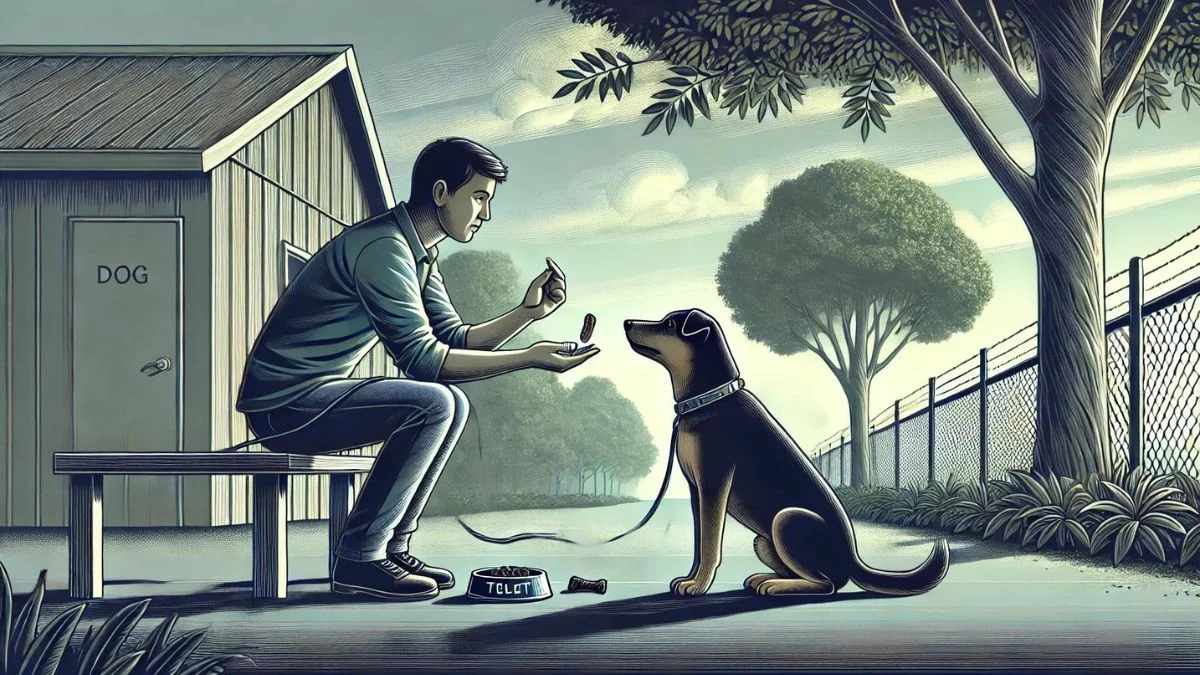Adopting a rescue dog can be a rewarding experience, but it also comes with its challenges. Rescue dogs often come with a history of trauma, neglect, or abandonment, which can lead to anxiety and fear in their new environment.
Understanding how to calm an anxious rescue dog is crucial for their well-being and for fostering a loving and trusting relationship. This guide provides practical tips and strategies to help you soothe your new furry friend and make their transition to a new home as smooth as possible.
Understanding Canine Anxiety
Signs of Anxiety in Dogs
Recognizing the signs of anxiety in dogs is the first step in addressing their needs. Common signs include:
- Panting and Pacing: Dogs may exhibit excessive panting and pacing around the room.
- Whining or Barking: Anxious dogs often vocalize their distress through whining or barking.
- Destructive Behavior: Chewing, digging, or scratching at doors and windows can be signs of anxiety.
- Trembling or Shaking: Physical manifestations of fear, such as trembling or shaking, are common.
- Excessive Licking or Biting: Dogs may lick or bite themselves excessively as a coping mechanism.
Causes of Anxiety
Anxiety in rescue dogs can stem from various factors, including:
- Previous Trauma: Abuse, neglect, or abandonment can leave lasting emotional scars.
- New Environment: Adjusting to a new home, with unfamiliar sights, sounds, and smells, can be overwhelming.
- Separation Anxiety: Fear of being left alone is common in rescue dogs who have experienced abandonment.
- Lack of Socialization: Limited interaction with other dogs or humans can lead to fear of new experiences.
Creating a Safe and Comfortable Environment
Establish a Safe Space
Provide a designated safe space where your dog can retreat and feel secure. This could be a crate, a specific room, or a cozy corner with their bed and favorite toys. Ensure this space is quiet and free from potential stressors.
Gradual Introductions
Introduce your dog to their new environment gradually. Allow them to explore one room at a time, rather than overwhelming them with the entire house. Keep introductions to new people and pets slow and controlled.
Consistent Routine
Dogs thrive on routine. Establish a consistent daily schedule for feeding, walks, playtime, and rest. Predictability helps reduce anxiety by providing a sense of security and stability.
Positive Reinforcement Training
Building Trust
Use positive reinforcement techniques to build trust and reinforce desired behaviors. Reward your dog with treats, praise, and affection for calm and relaxed behavior.
Basic Commands
Teaching basic commands like “sit,” “stay,” and “come” can help manage anxiety by providing structure and mental stimulation. Training sessions should be short, positive, and consistent.
Avoid Punishment
Avoid using punishment or negative reinforcement, as these can increase anxiety and damage the bond with your dog. Focus on encouraging and rewarding good behavior instead.
Exercise and Mental Stimulation
Physical Exercise
Regular physical exercise is essential for reducing anxiety and promoting overall well-being. Daily walks, playtime, and activities like fetch or agility training can help burn off excess energy and reduce stress.
Mental Stimulation
Mental stimulation is equally important. Provide puzzle toys, interactive feeders, and training games to engage your dog’s mind and prevent boredom. Scent games, such as hiding treats for your dog to find, can be particularly rewarding.
Calming Techniques
Massage and Touch
Gentle massage and touch can help soothe an anxious dog. Focus on areas where your dog enjoys being petted, such as the chest, neck, and back. Use slow, calming strokes to help them relax.
Calming Aids
Consider using calming aids such as:
- Thundershirts: These snug-fitting garments provide gentle pressure that can help reduce anxiety.
- Calming Sprays and Diffusers: Products containing pheromones, such as Adaptil, can create a calming environment.
- Natural Supplements: Supplements like CBD oil, chamomile, or valerian root can help calm anxious dogs. Always consult your veterinarian before starting any new supplements.
Sound Therapy
Playing calming music or white noise can help mask unsettling sounds and create a soothing environment. There are specific music playlists designed to reduce anxiety in dogs.
Professional Help
Veterinary Consultation
If your dog’s anxiety is severe or persistent, consult your veterinarian. They can rule out any underlying medical conditions and may prescribe medication to help manage anxiety.
Professional Training
Enlisting the help of a professional dog trainer or behaviorist can be beneficial. They can provide personalized strategies and support to address your dog’s specific anxiety issues.
Support Groups
Joining a support group for rescue dog owners can provide valuable advice, encouragement, and shared experiences. Connecting with others who understand the challenges can be reassuring and helpful.
Conclusion
Calming an anxious rescue dog requires patience, understanding, and consistent effort.
By creating a safe environment, establishing a routine, using positive reinforcement, and providing physical and mental stimulation, you can help your new companion feel secure and loved. Remember that every dog is unique, and what works for one may not work for another.
Stay attuned to your dog’s needs and progress, and don’t hesitate to seek professional help if needed. With time and dedication, you can build a strong, trusting bond with your rescue dog and help them thrive in their new home.


